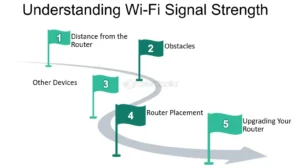In today’s fast-paced digital landscape, organizations face the challenge of being heard amidst a cacophony of voices. The reality is that an effective media strategy integrates communication and media into a cohesive, synergistic approach. Businesses that understand this dynamic are better positioned to optimize their reach and achieve their objectives.
So, what does it take to develop an integrated communication and media strategy that stands out in a crowded marketplace?
Understanding the Basics of Communication and Media
Before diving into the strategy, it’s crucial to grasp the fundamentals of communication and media. Communication involves the exchange of information between parties, while media refers to the various platforms and channels used to deliver that information.
An effective media strategy should align these two elements. This ensures that messaging resonates with audiences across different platforms.
Understanding Integrated Communication
Integrated communication refers to the coordinated use of various communication channels to deliver a consistent message across different platforms. This consistency helps build brand integrity and fosters stronger relationships with audiences. By aligning their messaging, organizations not only enhance their visibility but also improve audience engagement.
The Role of Media in Communication Strategies
Media plays a pivotal role in shaping public perception and driving engagement. In a digital-focused society, leveraging multiple media channels-such as social media, blogs, podcasts, and traditional media-is essential.
Each channel provides unique opportunities for engagement. But the key is to ensure that all platforms work together harmoniously.
The Role of Target Audience
Identifying and understanding your target audience is the bedrock of any media strategy. Media content to specific demographics achieves a higher engagement rate compared to that which isn’t.
Utilize surveys and focus groups to gather insights into your audience’s preferences, behaviors, and media consumption habits. This information will guide your content creation and distribution efforts.
Steps to Building an Effective Media Strategy
Creating a successful media strategy involves several key steps. Here’s a breakdown to guide you through the process:
- Define Your Objectives
- Understand Your Audience
- Select Your Channels
- Create a Content Calendar
- Monitor and Adjust
First, you need to know what you want to achieve. For example, getting more people to know your brand, selling a new product, or talking to a certain group of people.
Next, it’s important to learn about your audience by finding out what they like and how they spend their time. Then, choose the best places to share your message, like TV, radio, websites, or social media.
You should also make a content calendar to plan what you’ll share and when, so people stay interested. Lastly, keep checking how your plan is doing and make changes if needed to get the best results.
The Importance of Social Media in Today’s Media Strategy
Among the various channels available, social media has emerged as a powerful tool in an integrated media strategy. With billions of users worldwide, platforms like Facebook, Twitter, Instagram, and LinkedIn provide unprecedented opportunities for brands to engage directly with their audience. Efforts through social media marketing have been “somewhat effective” or “very effective” for businesses.
Engagement Through Authenticity
To thrive on social media, businesses must prioritize authenticity. Engaging content-whether through storytelling, user-generated content, or transparent communication-resonates more effectively with audiences. Brands that embrace this approach are proven to foster loyalty and drive conversions.
Leveraging Technology in Your Media Strategy
Using technology in your media plan can make things easier and work better. You can use tools that help you plan when to post content, track how people react, and talk with your audience. For example, social media tools can help you schedule posts, and special programs can show you what people like and how they behave.
Trends Shaping the Future of Media Strategies
The world of media is always changing. Right now, there are some important trends businesses should think about when making their media plans.
First, making content that feels personal to people helps them connect better and pay more attention. Second, videos are becoming very popular on many platforms. Using more videos can help reach more people.
Third, working with influencers- people who have many followers- can build trust and help your message spread. Lastly, using data to understand what works can help businesses send the right messages and make their campaigns better.
Creating a Cohesive Message Across Channels
Your messaging should resonate across all platforms. This coherence ensures that whether someone encounters your brand on social media, in an email, or through a blog, they’re receiving a unified message that aligns with your brand’s identity. Marketers noted improved audience engagement when their content was consistent across channels.
Measuring Success in Media Strategy
Measuring success is crucial for evaluating the effectiveness of your media strategy. Utilize analytics tools to track key performance indicators such as:
- engagement rates
- reach
- conversion rates
Regular analysis will help refine your strategy over time.
Key performance indicators to consider:
- Engagement Rate
- Reach and Impressions
- Website Traffic from Media Sources
- Conversion Rates
Utilizing a Social Media Agency
Sometimes, implementing an integrated media strategy can be daunting, particularly for smaller businesses. Partnering with a Social Media Agency can provide the expertise and resources needed to execute a successful media strategy.
Agencies often bring a fresh perspective and the skills necessary to manage campaigns efficiently. This allows you to focus on your core business activities.
Case Studies: Learning from Success
To understand how smart media plans work, let’s look at some famous brands. Coca-Cola connects with its customers by making special ads just for them, talking to people on social media, and using TV and other traditional ads really well.
Apple is known for exciting product launches that get a lot of attention on TV and online. This makes people very excited before new products come out. These brands show how using many types of media together can be very successful.
Common Pitfalls to Avoid
Even the best media plans can sometimes go wrong. Some common mistakes to watch out for include not keeping the same clear message on all platforms. This can confuse people.
Also, not using data to help make smart choices can cause problems. Finally, only trying to sell something without talking or listening to your audience can make people less loyal to your brand. It’s important to avoid these mistakes for a strong media strategy.
Strengthening Your Media Strategy
Building a good communication and media plan is very important for brands that want to connect well with their audience. When you mix smart communication with a strong media plan, your brand can reach more people and become more popular.
Take a step forward. Look at your current plans and find ways to bring your communication and media efforts together in a better way.
For more informative tips, check out our blog posts.










